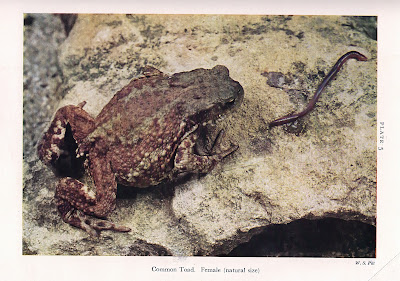Herbert McLean Evans (1882-1971) was a big man, literally and metaphorically, in American biological research. His biographers wrote of him:
He was interested in everything which was going on in biology, in embryology, endocrinology, physiology of reproduction, nutrition, genetics, the history of science and medicine and the collection of books. Nothing was too large for him, nothing too trivial, if it threw light upon the central question--the pursuit of truth and the biology of man.
 |
H.M Evans
from Amoroso and Corner |
Evans was a pioneer in the study of the anterior pituitary gland and its hormones. However, he is now best remembered eponymously for a relatively minor biological discovery he made in 1914. The effects of dyes made largely by the German chemical industry on biological tissues and processes was a major activity in searches for ‘magic bullets’ against disease. One dye studied by Evans as a tissue stain was found to bind strongly to proteins in the plasma and could therefore be used to measure human blood volume in health and disease. As a result it was sold by Eastman Kodak as ‘Evans Blue’. Evans Blue is still widely used to study such topics as the permeability of blood vessels and for locating lymph nodes.
Evans after spending time at Johns Hopkins medical school (where he graduated in medicine without, it was said, stepping foot into a hospital) and in Germany, in 1915 he was appointed to the chair of anatomy at the University of California, Berkeley where he remained, with periods elsewhere, until he retired in 1952. As was typical of the time—and for most of the rest of the 20th century—there were visits and close links between biomedical scientists in the USA and those in Britain. Evans was therefore well known to early British endocrinologists and he elected a Foreign Member of the Royal Society in 1951. After he died his closest friend on this side of the Atlantic, Geoffrey Wingfield Harris (1913–1971) volunteered to write his biographical memoir and made a few preliminary notes. However, Harris died a short time later. The job of writing the memoir then fell to George Washington Corner (1889-1981) from the USA, also a Foreign Fellow elected in 1955, and ‘Amo’ (Emmanuel Ciprian Amoroso, 1901-1982) who knew Evans and his reputation. Corner was in many ways ideally placed. He had been appointed by Evans to a position in at Berkeley in 1915 and had spent separate years working in London and Oxford.
The job of co-author gave Amo some anguish and a lot of hard work. Corner’s contribution was largely that he published as a biographical memoir for the National Academy of Sciences leaving Amo to add more. The narrow office Amo occupied as a visitor at Babraham (mine previously and one I had been delighted to ‘lend’ him) was full of cigar smoke for weeks on end as he wrote about Evans using his usual thick-nibbed blue felt-tip pen and managing only to get a few lines onto each page. One of the problems faced by Amo was that Evans was hated by a large number of his contemporaries in the USA and a form of words was needed to mark but not dwell on that aspect of his career.
The history of the scientific advances in the many topics Evans worked on also proved difficult to write. One day though, when he must have been nearing the end, Amo emerged on the lookout for somebody to tell of a eureka moment. He caught the late Jim Linzell and I in the corridor as we headed for the coffee room. ‘I’ve got it—it just came to me—the words that all those who knew Evans and his reputation will understand, without the rest of the world knowing and us saying outright that he was a devil for the women’. The rest of the world reading the very long memoir might though have been given some inkling that something else was to follow after the mention of his first, second and third wives and the ‘domestic infelicities’ that required him to sell his first antiquarian book collection in order to reimburse the family trust funds of the first.
I had no idea whether the words Amo read out from his draft that afternoon nearly 50 years ago had made it into the final version of the biographical memoir. When I thought of it a few weeks ago I found that they had. This is what he had written:
…but his influence always, extraordinary, is still active. Only those who have known him and worked with him or under him can realize the extent to which this is true.
Amoroso EC, Corner GW. 1972. Herbert McLean Evans 1882-1971. Biographical Memoirs of Fellows of the Royal Society. 18: 82–186. doi:10.1098/rsbm.1972.0005
Corner GW. 1974. Herbert McLean Evans 1882-1971. Biographical Memoir, National Academy of Sciences 153-192.
Yao L, Xing X, Yu P, Ni Y, Chen F. 2018. Evans Blue dye: a revisit of Its applications in biomedicine. Contrast Media & Molecular Imaging Volume 2018 Article ID 7628037 https://doi.org10.1155/2018/7628037





